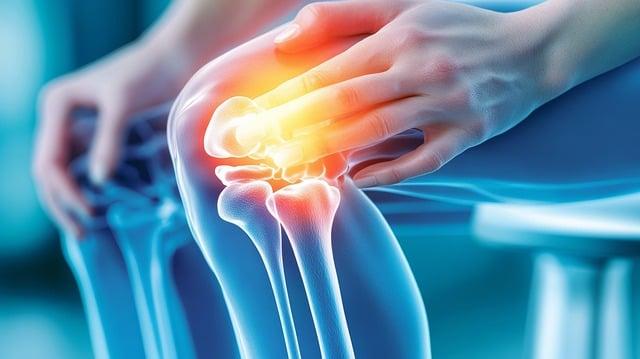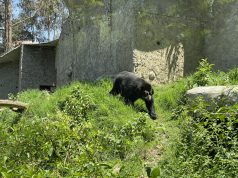As we age, maintaining strong and healthy bones becomes increasingly important for preserving mobility, independence, and overall quality of life. For seniors, the risk of bone-related conditions such as osteoporosis and fractures can be a significant concern. However, the good news is that there are practical and effective strategies to support bone health well into the golden years. In this article, we will explore a range of tips and lifestyle adjustments that can help seniors maintain robust bones. Our aim is to provide you with clear, actionable advice that empowers you to take charge of your bone health, ensuring that you can continue to enjoy your favorite activities and live life to the fullest. Let’s embark on this journey to stronger bones together, with understanding and care at every step.
Understanding the Importance of Bone Health in Your Golden Years
As we age, maintaining strong bones becomes increasingly vital for overall health and well-being. The risk of osteoporosis and fractures increases in our later years, making it crucial to focus on bone health. Here are some tips to help keep your bones strong and resilient:
- Stay Active: Engage in regular weight-bearing exercises like walking, dancing, or yoga. These activities help improve bone density and balance, reducing the risk of falls.
- Eat a Bone-Healthy Diet: Incorporate foods rich in calcium and vitamin D, such as leafy greens, dairy products, and fortified cereals. These nutrients are essential for maintaining bone strength.
- Get Regular Check-Ups: Schedule routine bone density tests and medical check-ups to monitor your bone health and catch any issues early.
| Key Nutrient | Recommended Daily Intake | Food Sources |
|---|---|---|
| Calcium | 1,200 mg | Milk, Cheese, Kale |
| Vitamin D | 800 IU | Salmon, Egg Yolks, Sunlight |
| Protein | 46-56 g | Lean Meats, Beans, Tofu |
Remember, taking proactive steps now can significantly impact your quality of life. By incorporating these strategies, you not only nurture your bones but also enhance your overall health and vitality in your golden years.

Incorporating Nutrient-Rich Foods to Strengthen Bones
Maintaining strong bones is essential for seniors, and one of the most effective ways to achieve this is by incorporating nutrient-rich foods into their daily diet. As we age, our bones naturally lose density, making them more susceptible to fractures. To counteract this, it’s crucial to consume foods that are high in calcium, vitamin D, magnesium, and other bone-supporting nutrients.
- Calcium-rich foods: Dairy products like milk, cheese, and yogurt are excellent sources. For those who are lactose intolerant or prefer plant-based options, consider fortified plant milks, almonds, and leafy greens such as kale and broccoli.
- Vitamin D: This vitamin is vital for calcium absorption. While sunlight is a natural source, foods like fatty fish (salmon, mackerel), egg yolks, and fortified cereals can help maintain adequate levels.
- Magnesium and zinc: Nuts, seeds, and whole grains provide these essential minerals, which support bone health by promoting bone density and structure.
Here’s a quick reference table of bone-strengthening foods and their key nutrients:
| Food | Key Nutrient |
|---|---|
| Almonds | Calcium |
| Salmon | Vitamin D |
| Spinach | Magnesium |
| Egg Yolks | Vitamin D |
Incorporating these foods into daily meals can be both simple and delicious. Try adding a handful of nuts to your morning cereal or enjoy a serving of grilled fish with dinner. Remember, a balanced diet not only fortifies your bones but also contributes to overall well-being.

Staying Active with Senior-Friendly Exercises for Bone Density
As we age, maintaining an active lifestyle is crucial for preserving bone density and overall health. Engaging in exercises specifically designed for seniors can make a significant difference in bone strength and balance. Here are some senior-friendly exercises to consider:
- Walking: A simple yet effective way to boost bone health, walking improves circulation and strengthens muscles around the bones.
- Water Aerobics: The buoyancy of water reduces stress on the joints while still providing resistance to help build bone density.
- Chair Yoga: This gentle form of yoga can enhance flexibility, balance, and strength without putting undue pressure on the bones.
Incorporating these exercises into a regular routine can be both enjoyable and beneficial. Below is a quick reference table for easy integration into your weekly schedule:
| Exercise | Frequency | Duration |
|---|---|---|
| Walking | 3-5 times a week | 30 minutes |
| Water Aerobics | 2-3 times a week | 45 minutes |
| Chair Yoga | Daily | 15 minutes |

Creating a Safe Home Environment to Prevent Falls and Fractures
As we age, ensuring our living spaces are free from hazards becomes increasingly crucial to maintaining our health and independence. Here are some practical tips to make your home safer and reduce the risk of falls and fractures:
- Clear Pathways: Keep floors clutter-free and remove tripping hazards such as loose rugs or electrical cords. Ensure that walkways are wide enough for easy navigation, especially if mobility aids are used.
- Proper Lighting: Install adequate lighting in all areas of the home, including staircases and hallways. Consider night lights in bedrooms and bathrooms to prevent accidents during nighttime visits.
- Safety Installations: Add grab bars in the bathroom and handrails on both sides of staircases. Non-slip mats in the shower and bathtub can also help prevent slips.
| Area | Safety Tip |
|---|---|
| Living Room | Secure rugs with non-slip backing. |
| Kitchen | Keep frequently used items within easy reach. |
| Bedroom | Use bed risers for easier access. |
By taking these steps, you can create a safer environment that promotes confidence and independence, allowing seniors to enjoy their homes without the constant worry of falling.








































